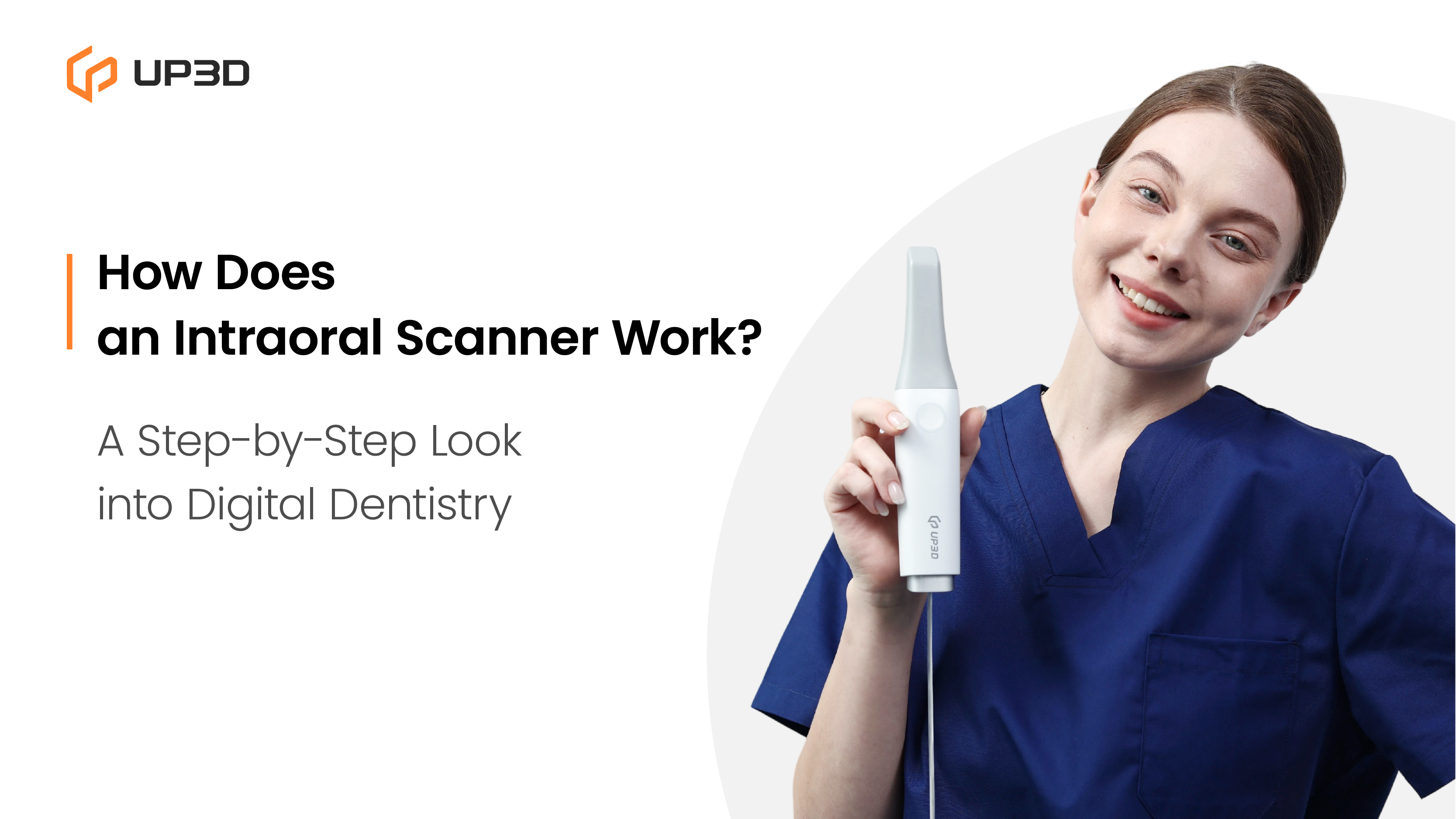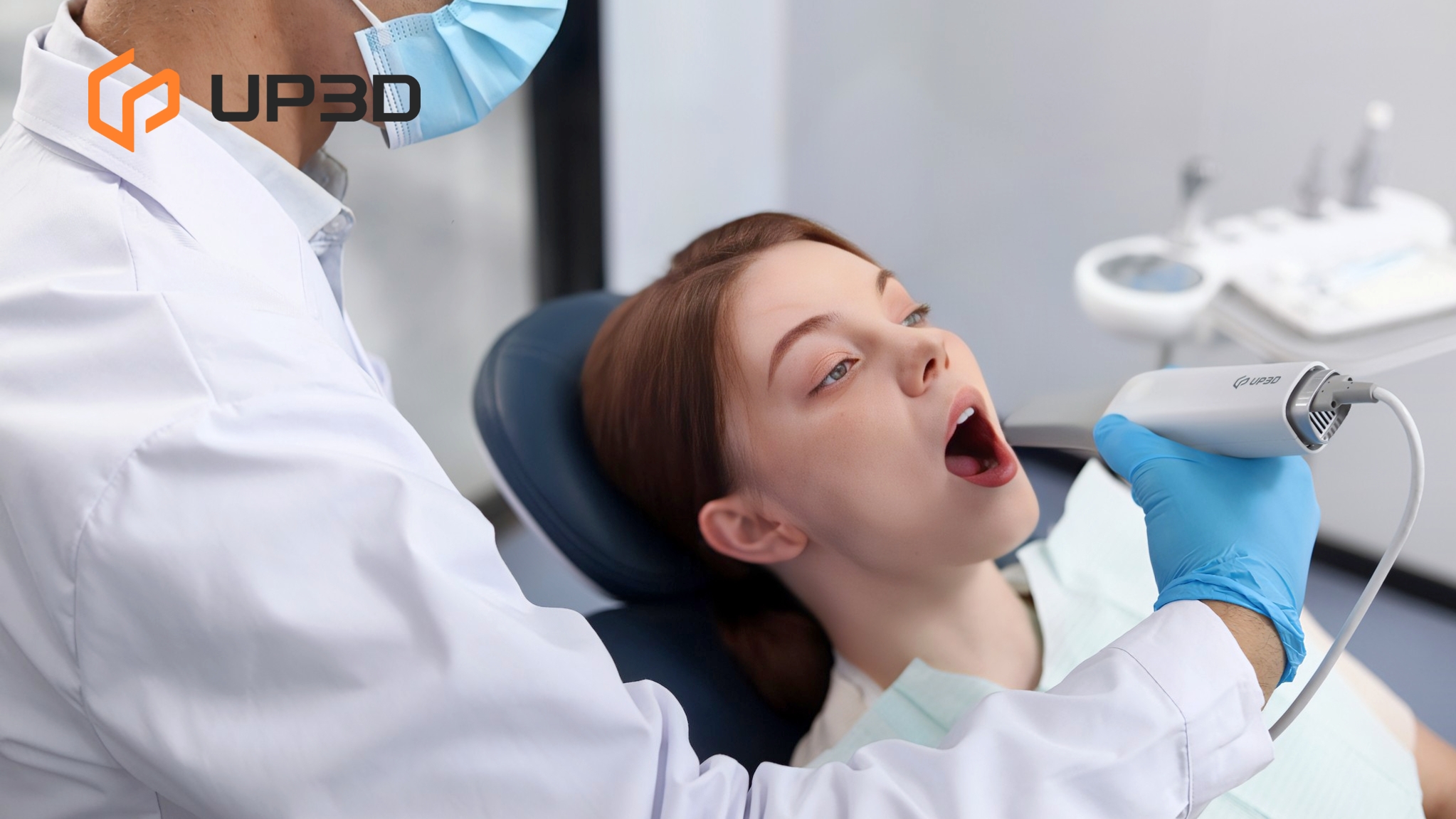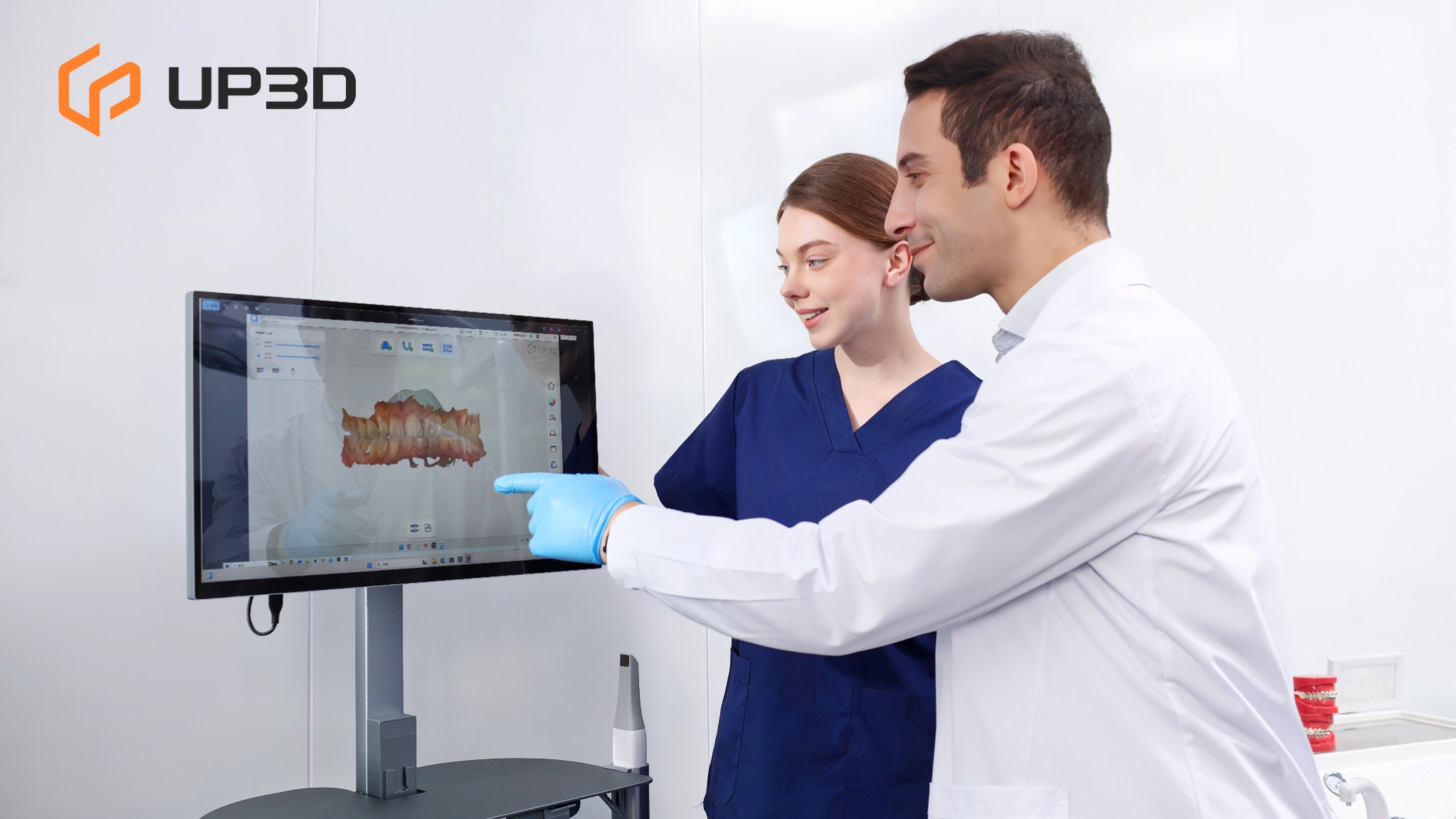Taking dental impressions used to mean messy materials, long waiting times, and uncomfortable procedures.
Today, intraoral scanners have transformed this process, replacing physical molds with accurate digital data captured in seconds. Instead of pressing trays filled with silicone into a patient's mouth, dentists can now scan, visualize, and design restorations digitally—offering a faster, cleaner, and more comfortable experience for everyone involved. If you're new to digital dentistry and want to start with the basics, read our introduction:
What Is an Intraoral Scanner?
It explains what these devices are and why they've become essential in modern clinics.

What Exactly Is an Intraoral Scanner?
An intraoral scanner (IOS) is a handheld optical device that captures the geometry of teeth and gums by taking hundreds or even thousands of high-speed images.
These images are processed by advanced algorithms to form a true-to-life 3D model of the patient's mouth.
The digital model can then be used for diagnosis, treatment planning, or directly exported into CAD/CAM systems for designing and milling restorations such as crowns, bridges, or veneers. It is the foundation of modern digital dentistry.
The Step-by-Step Scanning Process
The working principle of an intraoral scanner can be understood in several key steps.
First, the scanner projects structured light or a laser pattern onto the surfaces of the teeth. The reflected light is captured by the device's optical sensors to measure surface depth and contour.
As the dentist gently moves the scanner along the dental arch, the system captures hundreds of frames per second, recording fine details of both hard and soft tissues.
Next, advanced AI and image-matching algorithms reconstruct these images in real time, forming a complete 3D digital model. Some scanners also add color rendering, allowing clinicians to distinguish enamel, gingiva, and restorations directly on the screen.
Finally, the finished 3D data—usually in STL, PLY, or OBJ format—can be instantly shared with dental labs or imported into CAD software for digital design and manufacturing.

Why It Matters: Benefits Beyond Accuracy
While accuracy and speed are key benefits, the true value of digital scanning extends far beyond measurement precision.
For patients, it means a more comfortable experience without impression materials or gag reflexes. For clinics, it means faster workflows and fewer remakes, as digital data can be transmitted instantly to dental labs—no shipping or courier delays.
Digital impressions also reduce the use of physical materials, lowering costs and supporting a cleaner, more sustainable environment. Most importantly, patients can see their digital model on screen within seconds, improving understanding and treatment acceptance.
Inside the Technology
Modern intraoral scanners combine optical imaging, AI processing, and powerful computing to deliver real-time 3D visualization.
Some systems use confocal microscopy to capture depth, while others rely on triangulation or structured-light projection.
AI algorithms play an important role in automatically identifying missing data, removing unwanted artifacts such as tongue or mirror reflections, and enhancing surface smoothness. This combination of optical and digital intelligence allows dentists to scan faster, achieve higher accuracy, and experience a smoother workflow.
Integration into the Digital Workflow
Once scanning is complete, the 3D model seamlessly connects to the digital dentistry workflow—from CAD design and CAM nesting to final milling.
For example, UP3D's ecosystem links the UP610 intraoral scanner with UPCAD for design, UPCAM for toolpath calculation, and P55D or P42 PLUS milling machines for production. This all-digital process shortens turnaround time, minimizes manual errors, and enables same-day restorations with exceptional precision.

Why Clinics Are Adopting Intraoral Scanners
Across the globe, more and more clinics are embracing digital scanning technology. Studies show that over 60% of new dental clinics now consider an intraoral scanner as essential equipment.
The reasons are clear: improved patient satisfaction, faster treatment times, better operational efficiency, and the ability to stay competitive in the era of digital dentistry.
The Future of Intraoral Scanning
The next generation of intraoral scanners will go beyond simple data capture. AI-driven automation, cloud connectivity, and intelligent analysis will play a major role in how clinics operate.
Imagine a scanner that not only captures data but also identifies margin lines, suggests restoration designs, and communicates directly with your dental lab.
At UP3D, innovation in this direction is already underway. Our newest scanners combine deep-learning algorithms, ergonomic design, and open-system compatibility—built to make digital workflows faster and smarter.
Final Thoughts
Intraoral scanners are more than just replacements for traditional impression trays—they represent a new era of precision, comfort, and efficiency in dentistry.
For any clinic looking to modernize, build patient trust, and deliver high-quality restorations faster, adopting an intraoral scanner is not a question of if—but when.
Explore UP3D’s Intraoral Scanning Solutions
Discover how UP3D's latest UP610 intraoral scanner enhances accuracy, speed, and ease of use through smart scanning and seamless digital integration.
Learn more about UP610 →

